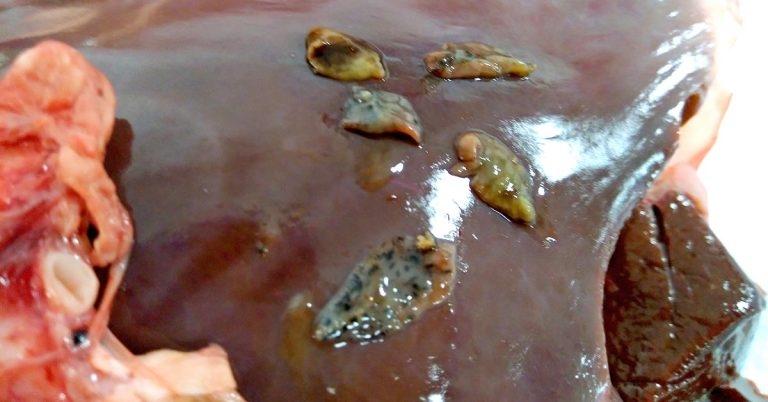2 Nov 2020
Vets advising beef farmers should encourage them to act on liver fluke as study shows average lifetime losses of more than £60 per animal.

Liver fluke Fasciola hepatica infection taken from a cow. Image from “Update on livestock parasitology” by Hany Elsheikha.
Vets should be advising farmers about liver fluke control with new research showing average lifetime losses of more than £60 per animal for fattening steers with fluke infections.
Boehringer Ingelheim Animal Health has highlighted research by Carroll et al and pointed out that while fluke infections rarely caused acute disease in cattle, chronic infections can impair feed conversion ratios, growth rates and reduce carcase quality.
Sioned Timothy, ruminal technical manager for Boehringer, said: “The financial and production impact of liver fluke should not be underestimated.
“Recent abattoir research in Ireland, published this year, has shown that a fattening steer with fluke infection will put on 36kg less live weight gain over its lifetime versus a healthy steer, costing the producer around £63 per animal.
“Additionally, analysis of data from cattle at a Scottish abattoir showed that animals with 1 to 10 liver fluke present in their liver took an average 31 days longer to reach slaughter weight, while animals with more than 10 liver fluke present took an additional 77 days longer to reach slaughter weight versus animals without any liver fluke infection.
“Liver fluke infections can also lead to hormonal and metabolic imbalances, affecting reproduction in female animals and extending breeding targets. Affected animals may also be more susceptible to secondary bacterial infections, such as Salmonella and clostridial infections.”
Once cattle are brought in for winter housing, Ms Timothy added that it was a good time to remove productivity-limiting parasites acquired out at pasture.
The choice of treatment for liver fluke at housing is complicated by emerging resistance to triclabendazole. This is the only flukicide that treats the early immature stage of liver fluke – responsible for acute disease in sheep, but not of clinical relevance in cattle.
Ms Timothy added: “Prescribing an alternative flukicide for cattle at housing will reduce selection for resistance and, by targeting the later stages of the parasite, control the impact of liver fluke on productivity.”